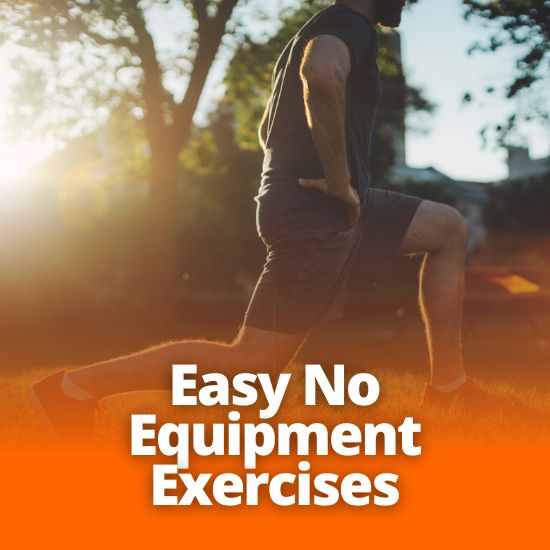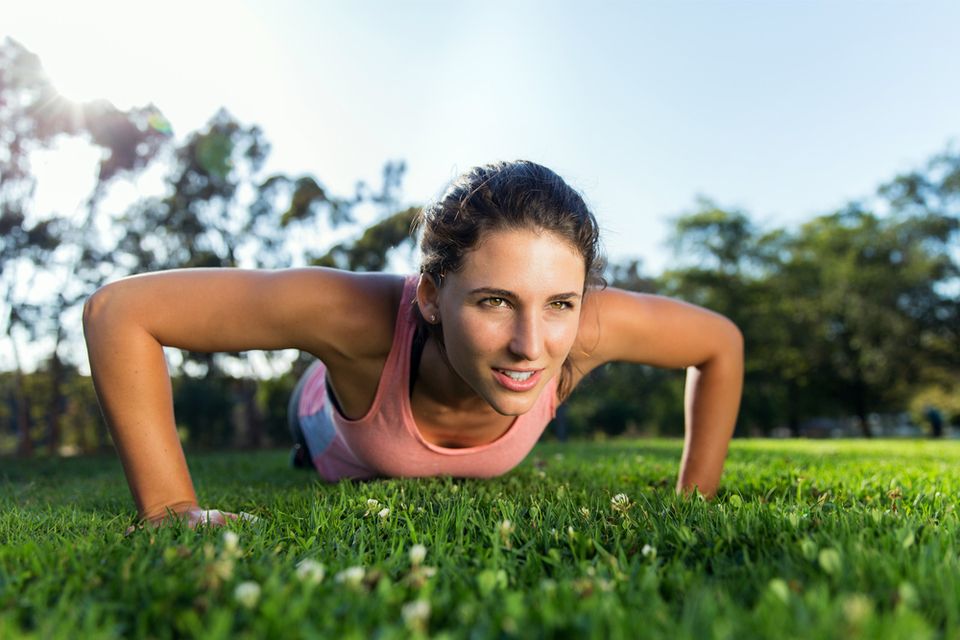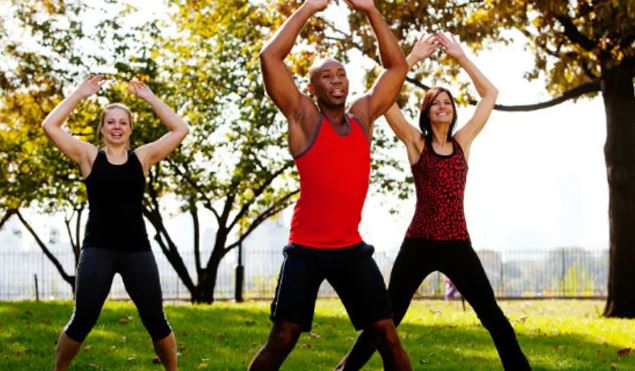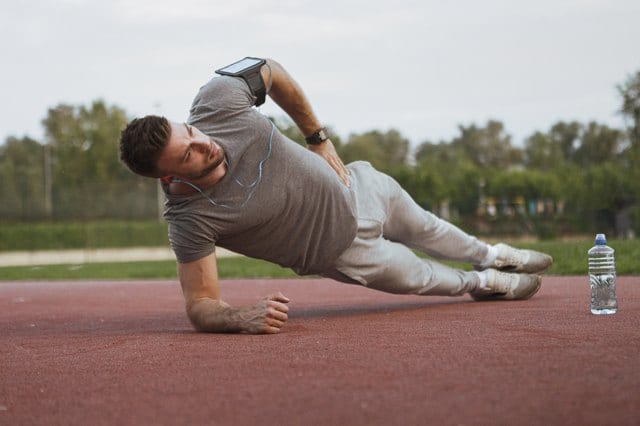
Easy No Equipment Exercises
Staying fit and healthy on the road can be both easier and harder than at home. Sure, you can hit a walk-in gym or rec complex, hiking is usually an option along with swimming, canoeing, or even golfing. But how about those Walmart parking lot nights or when you don’t feel like hitting the trails?
Here’s a list of some easy, no equipment exercises that you can throw into your routine to get your blood moving. Even some you could easily do on driving days during a pit stop too (we’ve marked them for your convenience).
A full workout can be considered: 3 sets (we’ve noted what 1 set is considered for each) of 6 exercises, with a minute or two of rest between each set. However, any bit of movement can be great; if you’re just starting out instead of counting reps/sets, break it down to however many you are able to do in 30 second intervals, with 20 seconds of rest in between each exercise. Try to keep moving during rest periods even if it’s a gentle shuffle side to side and moving your arms forward and back.
If you’re setting out for a full workout, be sure to do a light warmup beforehand, this can be a brisk walk or jog for example or even some slow stretches/yoga.
B – Beginner/Kid Friendly
P – Pit stop friendly/Small space friendly
Q – quiet/low impact
A – more advanced/intense
Bodyweight Squats: 5-10 reps = 1 set (Q) (P) (B)
How to: Stand with your feet shoulder width apart, toes slightly out and eyes forward (so don’t tilt your head up or tuck your chin).
Slowly bend your knees and drop your hips to lower your body. Keep your heels flat and back straight. As you bend your knees they should not should not go inwards or outwards but in the same direction as your toes. When you reach the lowest point you can comfortably go, pause for a few seconds to allow for a good stretch then push back to your starting position. Be sure to keep the motion strong and controlled and protect your back by pulling your belly button towards your spine.


Push-Ups: 5-10 reps = 1 set (Q)
How to: Begin on your hands and toes in a plank position, place your hands slightly wider than your shoulders, your legs together behind you. Don’t bow or bend your back, keep it straight with your bum down so your body makes a straight line. You should feel comfortable and balanced.
Lower your body to the ground while keeping your body straight, the movement should be controlled. Try and keep your elbows as close to your body as comfortably as you can, they should not flare out. Once you have reached your maximum depth without touching the ground push your body back up.
Alternates: Some of us aren’t strong enough for this full movement just yet so there are a couple alternatives that work the same muscles: Side Plank, High Plank, and Modified Push-Up.
Modified Push-Up: 10 reps = 1 set (Q) (B)
How to: Start in a table-top position on your hands and knees, walk your hands approximately 1 foot forward to get yourself into a straight line from shoulders to knees, similar to a standard push-up.
Lower down into a push-up with your feet raising from the ground, so instead of your toes your back balance point is your knees. Keep it a controlled movement with your elbows close to your sides and not flaring out. Once you’ve reached the maximum depth you can go without touching the ground push your body back up.


Lunges: 5-10 reps per leg, 10-20 total = 1 set (P) (Q) (B)
You can do these stationary or walking and are a good way to stretch your leg muscles after long periods of sitting.
How to: Stand upright with your feet together, take a large step (keep your feet straight) forward so your knee and foot will be level as you lower your hips forward by bending both of your knees. Each knee should form a 90-degree angle with your back knee toward the ground but not touching it and your front knee pointing forward in line with your foot. Raise yourself back up and repeat with the other side.
Always keep your back straight as you complete this exercise to avoid injury.
Plank: 20-45 seconds = 1 set (Q) (B)
There are 2 versions of this exercise: the standard plank and elbow plank, here’s how to do both.
How to: On hands and toes, place your hands slightly wider than your shoulders, your legs together behind you. Don’t bow or bend your back, keep it straight with your bum down so your body makes a straight line, remember to keep a strong core by pulling your belly button to your spine. You should feel comfortable and balanced.
The elbow plank is exactly the same, but you’re resting your weight on your elbows instead of your hands. This version can be easier on your wrists and elbows.
No matter which version you choose, to complete the rep you will hold your position to engage your core and abs. And another reminder to keep your belly button tucked back to your spine to strengthen your core and protect your back.


Jumping Jacks: 15 reps = 1 set (B) (P)
You probably learnt this back in elementary school, but to be thorough here’s a rundown.
How to: Stand upright with your arms down and close to your body. When you jump, snap your legs apart to shoulder width and bring your hands up and above your head. Jump back to start position to complete 1 rep.
Side Plank: 2-3 per side, 4-6 total = 1 set (B) (Q)
This exercise can help with endurance, stability, and improve posture (when done properly).
How to: Lie on your side with your knees bent back and then prop your upper body up on your elbow. Raise your hips from the floor so your body is a straight line and hold for 6-10 seconds. Rest and repeat. Keep a strong core to maintain a strong hold and protect your back.
This list is just a start, keep an eye out for more equipment free exercises in the future!
Information courtesy of My Health Alberta, and Healthline.com

